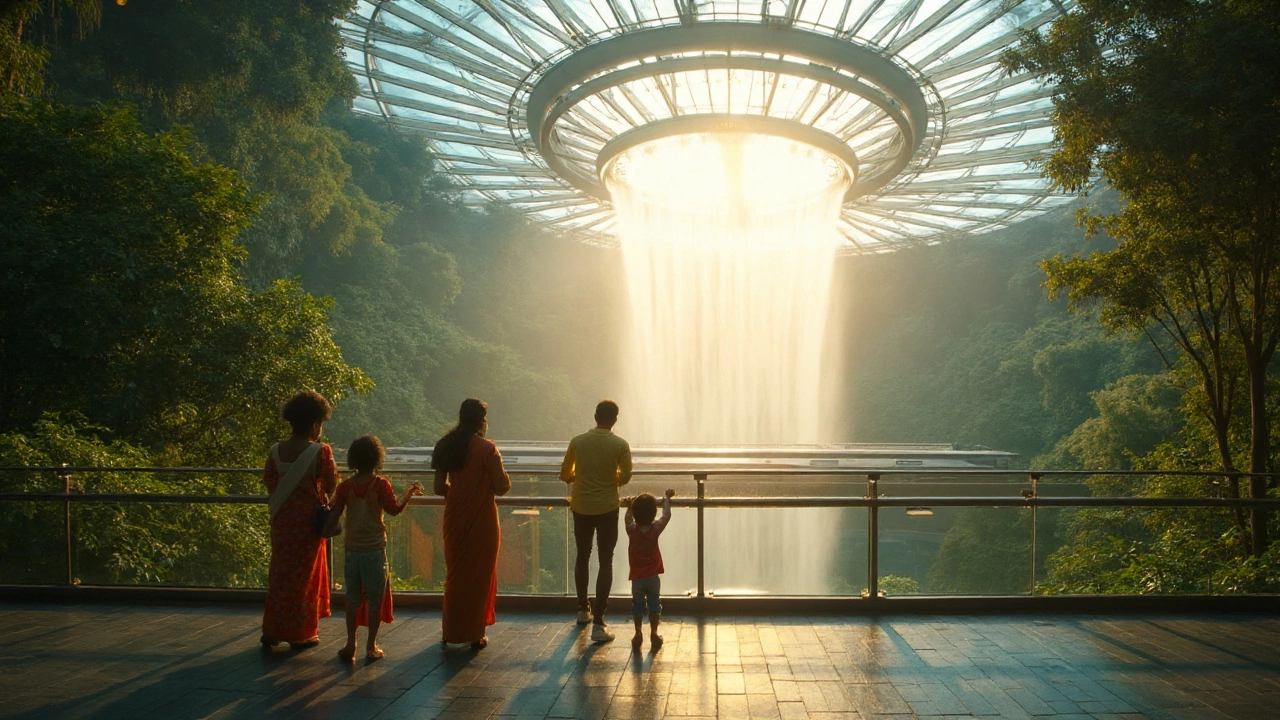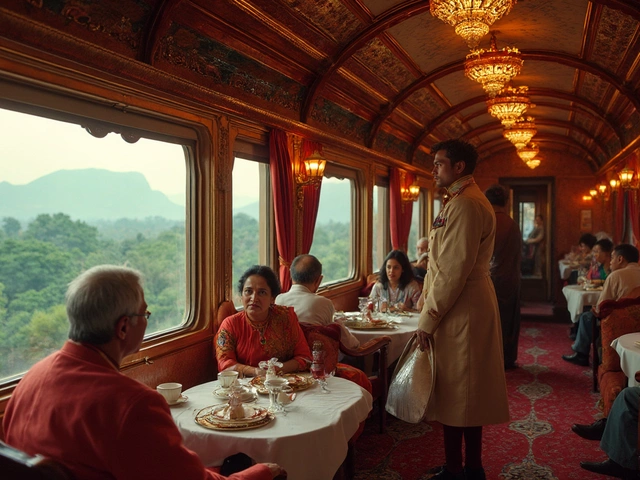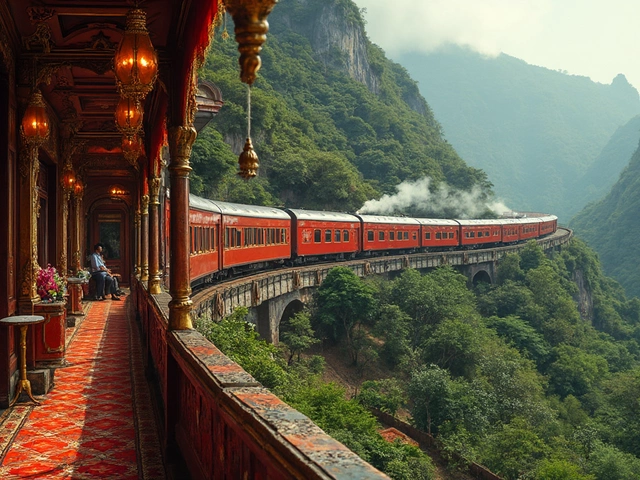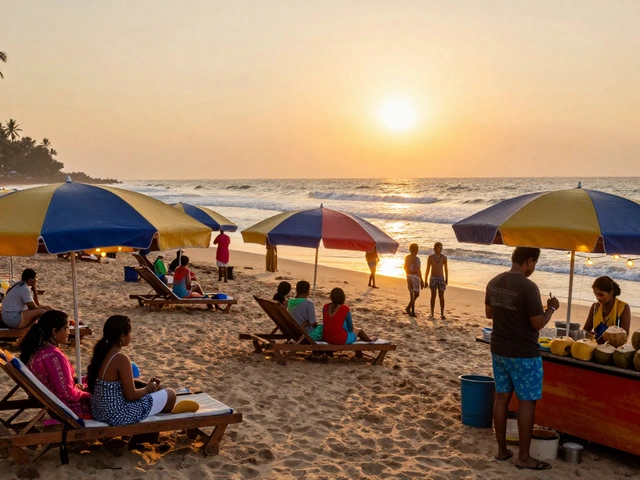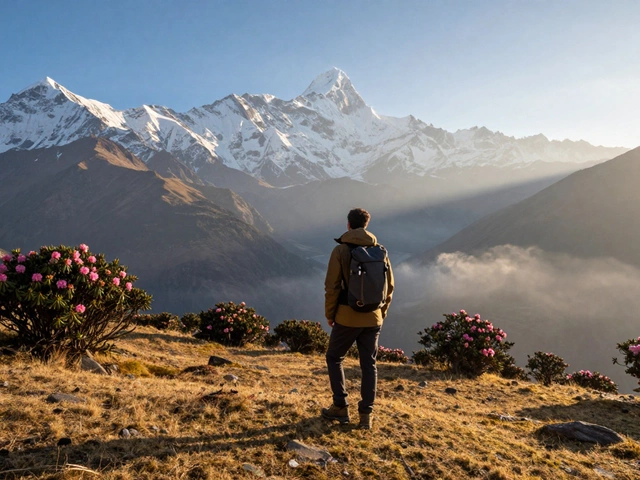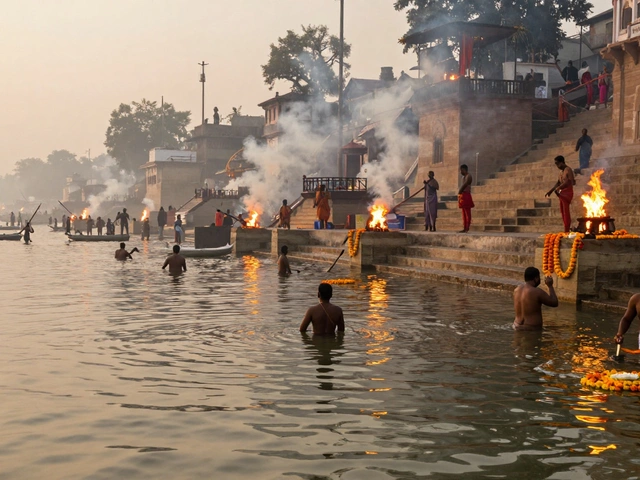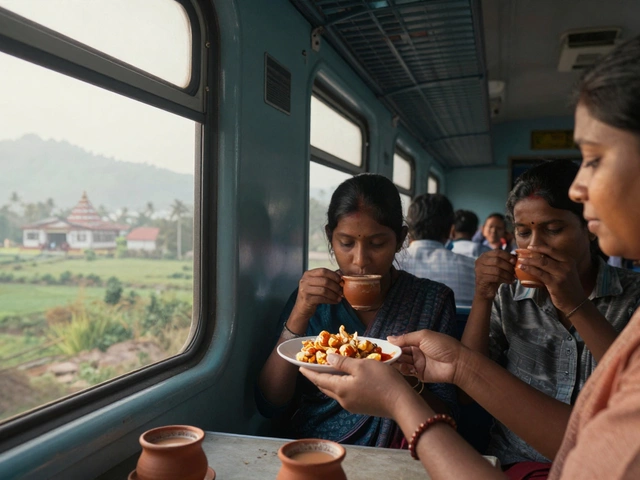Singapore Changi Airport is an international airport in Singapore known for biophilic design and hospitality. It blends a 40 m indoor waterfall (HSBC Rain Vortex), a 4-level forest (Shiseido Forest Valley), gardens, kinetic art, and frictionless wayfinding across 4 terminals and the Jewel complex (opened 2019; cost ~S$1.7b). You asked for the number 1 beautiful airport in the world. If we’re talking design, nature, and how the space makes you feel between flights, the crown goes to Singapore Changi. Beauty is subjective, sure-but when an airport doubles as a garden, art museum, and city square, it’s not a close contest.
TL;DR
- The short answer: Singapore Changi is the most beautiful airport thanks to nature-first design, art, and a calm, human flow.
- Signature features: Jewel’s 40 m indoor waterfall, a living rainforest, butterfly and sunflower gardens, and kinetic art.
- Close rivals for beauty: Doha’s Hamad (The Orchard garden), Seoul’s Incheon (light and art), Beijing Daxing (Zaha Hadid’s starfish), Istanbul (vaulted campus), Mumbai T2 (living museum).
- My criteria: Architecture, natural light and greenery, art, wayfinding, passenger comfort, and a sense of place-validated by awards (Skytrax, ACI) and design juries.
- Use our table and quick routes to make a beautiful layover even if you have only 60-90 minutes.
What makes an airport “beautiful” (and how I judge it)
Beauty in airports isn’t only about a dramatic roof or shiny marble. It’s about how the building lowers your blood pressure when you’re hauling a carry-on through security. I weigh six things: (1) architecture and structural clarity; (2) natural light and greenery that soften the space; (3) public art that sparks delight; (4) wayfinding and intuitive flow; (5) materials and acoustic comfort; (6) a real sense of place-could this be anywhere, or only here?
Awards help, but they focus on different metrics. Skytrax World Airport Awards is an annual award program (since 1999) that ranks airports by passenger surveys across categories like cleanliness, dining, and transit ease. Airports Council International (ACI) runs Airport Service Quality (ASQ) awards using live customer feedback. These focus on service and experience rather than pure design. For architecture, juries like the World Architecture Festival and the Royal Institute of British Architects (RIBA) weigh form, function, and sustainability.
Why Singapore Changi is #1 for beauty
Changi is the rare airport that feels like a park you can fly from. It leads on every criterion above and adds a few party tricks.
Jewel Changi Airport is a mixed-use hub (opened 2019) connecting Terminals 1-3, with 137,000 m² of retail, dining, and attractions. Designed by Safdie Architects with RSP and Benoy, it anchors the campus visually and socially. The glass-and-steel torus houses the showstopper: HSBC Rain Vortex a 40 m-tall indoor waterfall, recognized as the tallest of its kind, with evening light-and-sound shows and mist effects. Around it sits Shiseido Forest Valley a multi-level garden with over 2,000 trees and 100,000 shrubs, hiking paths, and microclimate controls to keep humidity comfortable year-round.
Inside the terminals, the nature theme continues. T3’s Butterfly Garden brings live butterflies into an aviation space; T2’s Sunflower Garden catches golden-hour light; T1’s Cactus Garden leans into hardy species. The art is not an afterthought. Kinetic Rain is a moving sculpture at Terminal 1 made of 1,216 bronze droplets that morph into fluid forms, symbolizing flight and weather. There’s also a four-storey slide in T3 for kids (and jet-lagged grownups), and a rooftop pool you can dip into during long layovers.
Good looks mean nothing if the building fights you. Changi’s flow is soft: clear sightlines, generous ceiling heights, daylight reaching deep into concourses, and a distinct material palette in each terminal so you always know where you are. Wayfinding is color-coded and supported by smart digital boards. Even the scent profile feels curated. That design calm is why families plan extra time to just “be” here.
Numbers back the mojo. Pre-pandemic, Changi handled around 68 million passengers (2019). Traffic rebounded strongly by 2023, and the campus has kept its standards while scaling. Jewel’s construction cost (~S$1.7 billion) shows the investment level in making the airport a destination, not just a node. Design critics love it; casual travelers love it more.
The closest rivals (and what they do best)
No airport is perfect for everyone. Here are the contenders that most often spark the “most beautiful” debate-and how they compare.
Hamad International Airport (Doha, Qatar) blends museum-grade art, warm stone, and a serene indoor garden. Skytrax named it World’s Best Airport in 2021, 2022, and again in 2024. Its 2022 expansion added The Orchard a 6,000 m² tropical garden with 300+ trees and tens of thousands of plants under a filtered glass roof, designed for diffused daylight in a desert climate. The selfie magnet is Lamp Bear a 7 m yellow teddy sculpture by artist Urs Fischer, equal parts charming and surreal, anchoring the central concourse.
Incheon International Airport (Seoul, South Korea) is a lesson in daylight, clean lines, and reliable flow. Its terminals use soft curves, abundant glass, and curated art to keep energy light and calm, with strong transit connections to Seoul. If you care about comfort plus efficiency, Incheon rarely disappoints.
Beijing Daxing International Airport (PKX, China), designed by Zaha Hadid Architects, opened in 2019. The starfish plan pulls concourses into a central atrium so walking distances stay short. The sculpted roof and radial skylights are as photogenic as they are practical. Zaha Hadid Architects is an architecture studio known for fluid geometry and structural daring, bringing signature forms to aviation and civic projects worldwide.
Istanbul Airport (IST, Türkiye) scales up beauty. Vast vaulted halls, tulip-inspired columns, and a high-contrast wayfinding system tame an enormous hub. If you love grand gestures, IST delivers them with impressive consistency.
Chhatrapati Shivaji Maharaj International Airport Terminal 2 (Mumbai, India) is a cultural showpiece. SOM’s peacock-feather ceiling and the “Jaya He” museum showcase thousands of artworks along a 3 km art wall-arguably the world’s richest airport art program.
Heydar Aliyev International Airport (Baku, Azerbaijan) charms with timber cocoon pods set under a luminous shell. It’s intimate, warm, and very different from the typical high-gloss terminal.
Quick comparison: design signatures at a glance
| Airport | City | Opened / Major Upgrade | Signature Feature | Design Partner | Nature Integration |
|---|---|---|---|---|---|
| Singapore Changi | Singapore | 1970s; Jewel 2019 | 40 m indoor waterfall, Forest Valley | Safdie Architects | Extensive (gardens in terminals + Jewel) |
| Hamad International (DOH) | Doha | 2014; expansion 2022 | The Orchard tropical garden | Foster + Partners (masterplan) / HOK, others | High (central garden + natural light) |
| Incheon (ICN) | Seoul | 2001; T2 2018 | Daylit concourses, art program | Gensler, Heerim, others | Moderate (gardens, indoor green pockets) |
| Beijing Daxing (PKX) | Beijing | 2019 | Starfish plan, sculpted roof skylights | Zaha Hadid Architects | Moderate (light courts, planting zones) |
| Istanbul (IST) | Istanbul | 2018-2019 | Vast vaulted terminal, tulip columns | Grimshaw, Haptic, Nordic (IGA team) | Low-Moderate (scale-driven aesthetics) |
| Mumbai T2 (CSMIA) | Mumbai | 2014 | “Jaya He” 3 km art museum wall | Skidmore, Owings & Merrill | Moderate (indoor planting + art focus) |
| Heydar Aliyev (GYD) | Baku | 2014 | Timber cocoons under luminous shell | Autoban | Low-Moderate (warm materials over planting) |

How the rankings and awards fit into this call
“Best” and “most beautiful” can diverge. Skytrax crowned Doha’s Hamad International Best Airport in 2024, after giving it the top spot in 2021 and 2022. In 2023, that top spot returned to Singapore Changi. Those titles reflect votes across many categories-cleanliness, security queues, dining, transfer ease-not just aesthetics. Meanwhile, design juries praised Beijing Daxing’s structural clarity and Istanbul’s ambitious scale. Put simply: operational excellence can live in one hub while design beauty peaks in another. For pure beauty that travelers can feel in minutes, Changi still edges it.
Case studies: what beauty looks like in motion
Nature that breathes: At Changi, Rain Vortex pulls daylight down into a lush valley. At Hamad, The Orchard uses filtered glazing for soft desert light. The lesson is similar-if you bring the outside in, stress drops and time feels kinder.
Art that isn’t background noise: Kinetic Rain at Changi occupies prime space, not a corridor. Lamp Bear in Doha is impossible to ignore. Mumbai T2 elevates local culture to museum level. These pieces anchor memory. Weeks later, you remember a sculpture, not a gate number.
Flow you don’t notice: Beijing Daxing compresses walking distances with a starfish layout. Incheon’s signage and daylit spines make transfers feel shorter than they are. Design that anticipates you is invisible-and that’s beautiful.
Related concepts and connected topics
- Biophilic design is an approach that integrates nature-light, water, planting-into built spaces to improve well-being and reduce stress. Airports using it (Changi, Hamad) report happier travelers and longer dwell times.
- Transit-oriented development clusters mixed-use spaces around major transport hubs to boost access and economic activity. Jewel is a live example inside an airport.
- Public art programs commission large-scale works to create identity and engagement in civic spaces like terminals. Think Kinetic Rain, Lamp Bear, and Mumbai’s Jaya He wall.
- Wayfinding uses signs, colors, and architecture to guide movement without friction. Airports with legible structure feel calmer-and more beautiful.
- Sustainable design targets energy efficiency, water stewardship, and materials with low embodied carbon. Daylight and smart glazing cut power use while improving ambience.
How to experience a “beautiful” layover with limited time
If you’ve got 60-90 minutes, you can still catch the headline moments.
- Singapore Changi: From T1-T3, walk to Jewel. See Rain Vortex from Level 2 for the best full-frame view. If time allows, pop up to Canopy Park for the misty Canopy Bridge.
- Doha Hamad: Head for The Orchard (North Node) to soak in the indoor garden. Snap Lamp Bear en route. Bonus: follow the art map on the terminal screens for a quick loop.
- Seoul Incheon: Hit the cultural performances if they’re on; otherwise pick a quiet seating area near a daylight court and just breathe.
- Beijing Daxing: Stand under the central atrium and look up-you’ll see the radial skylights converge like a camera iris.
- Istanbul: Give yourself time to cross the central hall; the scale is the show. Watch for the tulip columns and the vaulted canopies.
- Mumbai T2: Walk the “Jaya He” art wall. Take in the peacock-feather ceiling at the central check-in hall.
Why the answer isn’t just a list
Beauty in airports lives at the intersection of design and emotion. Changi wins not only because it looks stunning, but because you can navigate it half-asleep and never feel lost. Doha turns a desert hub into an oasis. Incheon proves restraint can be gorgeous. Beijing Daxing shows geometry can reduce stress. Istanbul reminds us that sheer scale can inspire. Mumbai proves culture gives an airport its soul. Different paths, same aim: making the wait feel human.
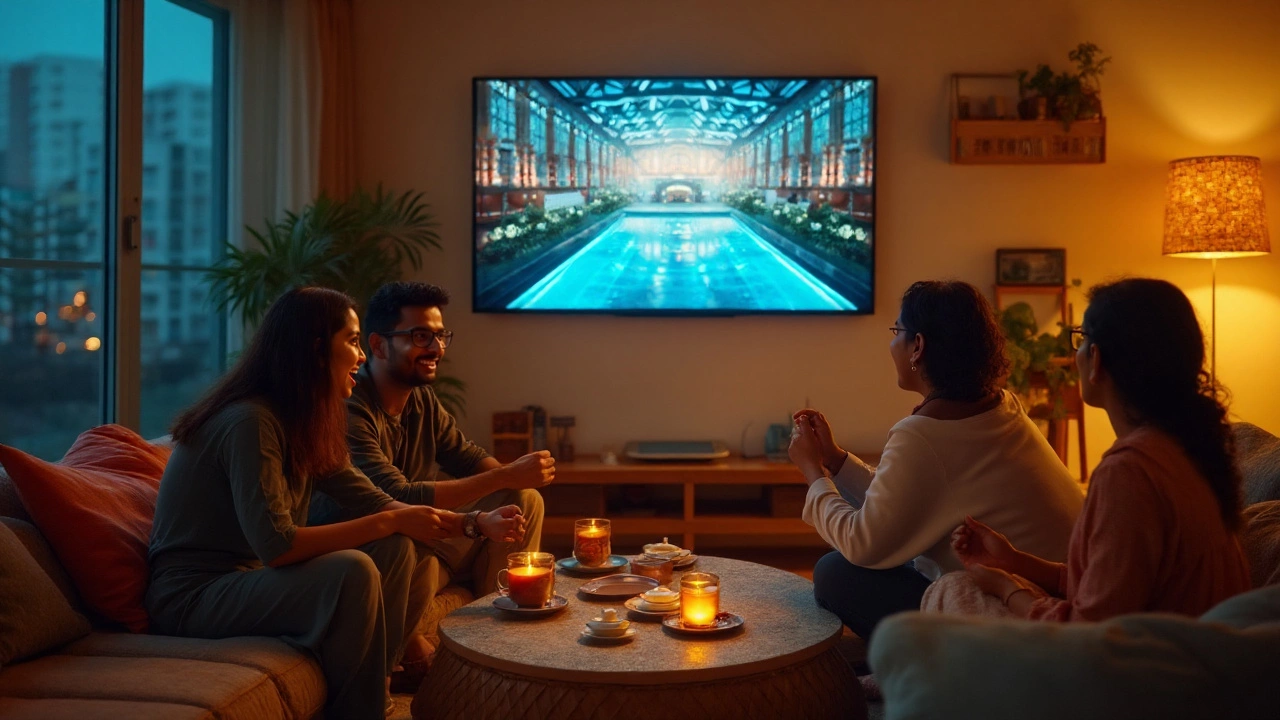
Frequently Asked Questions
Which airport is the number 1 most beautiful in the world?
Singapore Changi takes the top spot for beauty. Its Jewel complex with the 40 m Rain Vortex waterfall and the Forest Valley garden turns an airport into a public park. Add in terminal gardens, kinetic art, and calm wayfinding, and it stands out even against heavyweights like Doha’s Hamad International and Beijing Daxing. Awards like Skytrax focus on wider service criteria, but for pure aesthetics and atmosphere, Changi leads.
Is the most beautiful airport also the best airport?
Not necessarily. “Best” rankings (like Skytrax) include cleanliness, security, dining, and transfer times. Beauty is about architecture, nature, art, and how a space feels. In 2024, Skytrax named Doha’s Hamad International the World’s Best Airport, while many travelers still consider Changi the most beautiful. Different metrics, different winners.
What makes Jewel at Changi so special?
Jewel is a glass torus that connects terminals and functions like a city square. The 40 m indoor waterfall (HSBC Rain Vortex) anchors the space, while the Shiseido Forest Valley wraps four levels of paths and planting. Above, Canopy Park adds bridges, mazes, and nets. It’s designed by Safdie Architects and opened in 2019 after a ~S$1.7b investment. It’s stunning to look at and easy to enjoy in a short visit.
Which airports are the most beautiful alternatives to Changi?
Doha’s Hamad International (The Orchard and major art installations), Seoul’s Incheon (light, order, and comfort), Beijing Daxing (Zaha Hadid’s starfish form), Istanbul (grand vaulted spaces), Mumbai T2 (huge curated art museum), and Baku’s Heydar Aliyev (warm timber cocoons) are the strongest alternatives depending on what you value more-nature, art, geometry, or scale.
How can I see Changi’s waterfall on a short layover?
If you arrive into Terminals 1-3, follow signs to Jewel (landsidish connection with easy access). The best all-in view is from Level 2, central ring. If you have 30 extra minutes, go up to Canopy Park for the bridge and mist. In the evening, catch the light-and-sound show at the Rain Vortex; schedules are posted on-site.
Is Hamad International more beautiful than Changi?
They’re close but different. Hamad is calmer and more minimal-warm stone, filtered light, and The Orchard garden create a serene mood. Changi is more theatrical with the Rain Vortex and layered gardens. If you prefer quiet elegance, you may pick Doha; if you want a dramatic wow, Changi wins.
What’s the most beautiful airport in India?
Mumbai’s Terminal 2 is the standout for beauty. The peacock-feather ceiling, column detailing, and the “Jaya He” museum-thousands of artworks along a 3 km gallery-create a deep sense of place. Newer terminals in Delhi (T3) and Bengaluru (T2, garden-inspired) also push the design-forward trend.
Which design firm did Beijing Daxing and what’s unique about it?
Zaha Hadid Architects led Beijing Daxing. The terminal uses a starfish plan that pulls multiple piers into a central atrium, cutting walking times. Skylights and sculpted columns create dramatic views while providing clear orientation. It’s one of the most photographed airports for a reason.
